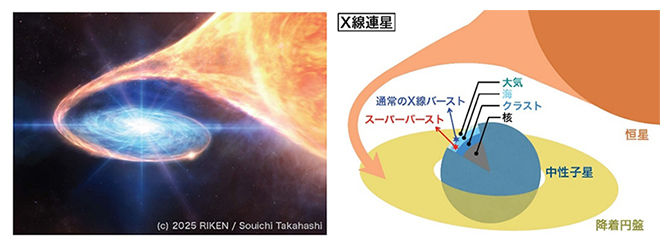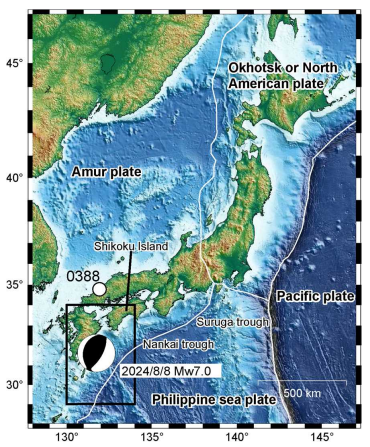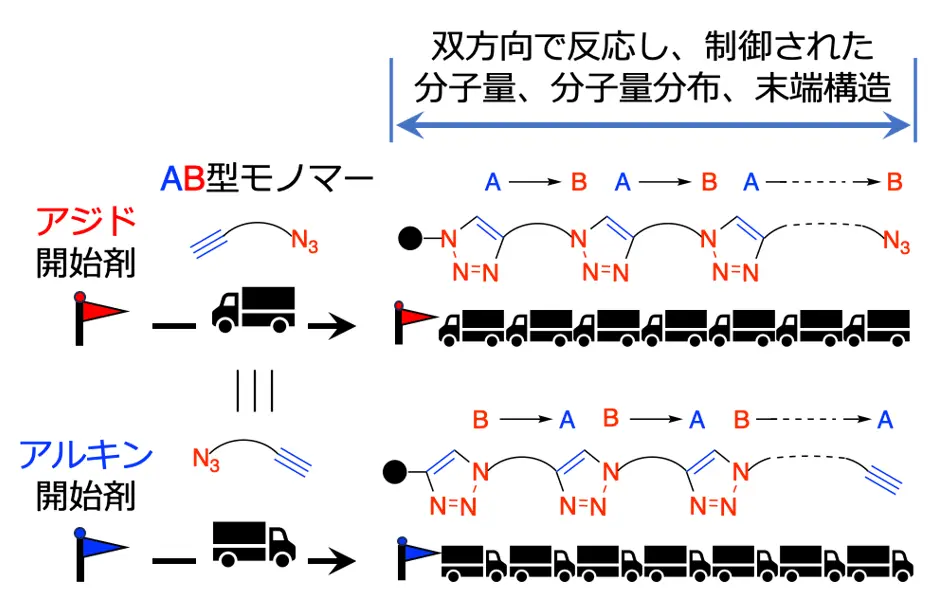2025-06-27 理化学研究所,東京理科大学,京都大学,千葉大学,広島大学

中性子星の表面で発生するスーパーバーストの(左)想像図と(右)模式図
<関連情報>
- https://www.riken.jp/press/2025/20250627_1/index.html
- https://iopscience.iop.org/article/10.3847/2041-8213/addd00
NinjaSat とMAXIで観測されたMAXI J1752-457の熱核スーパーバースト Thermonuclear Superburst of MAXI J1752−457 Observed with NinjaSat and MAXI
Amira Aoyama, Teruaki Enoto, Takuya Takahashi, Sota Watanabe, Tomoshi Takeda, Wataru Iwakiri, Kaede Yamasaki, Satoko Iwata, Naoyuki Ota, Arata Jujo,…
The Astrophysical Journal Letters Published: 2025 June 20
DOI:10.3847/2041-8213/addd00
Abstract
An uncatalogued bright X-ray transient was detected with MAXI on 2024 November 9, named MAXI J1752−457. The NinjaSat X-ray observatory promptly observed the source from November 10 to 18, while the small angular separation from the Sun hampered follow-up campaigns by other X-ray observatories. The MAXI and NinjaSat light curves in the 2–10 keV band showed first and second decaying components at the early and late phases, approximated by exponential functions with e-folding constants of 1.2 ± 0.2 and 14.9 ± 0.9 hr (1σ errors), respectively. A single blackbody model reproduces the X-ray spectrum with a softening trend of its temperature decreasing from 1.8 ± 0.1 keV to 0.59 ± 0.06 keV. Assuming the unknown source distance at 8 kpc, at which the initial X-ray luminosity roughly corresponds to the Eddington limit, the shrinking blackbody radius was estimated at 5–11 km. This X-ray brightening is interpreted as a superburst in a Galactic low-mass X-ray binary, which is powered by thermonuclear burning triggered presumably by carbon ignition close to the outer crust of the neutron star. The transition between two decaying components occurred at 5.5–7.7 hr, corresponding to the thermal timescale of the burning layer. The ignition column density is estimated to be (1.8–2.8) × 1012 g cm−2.



